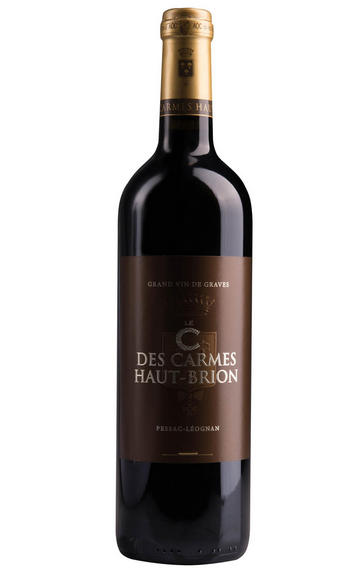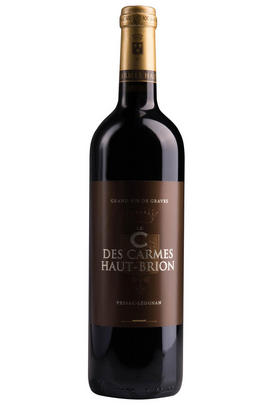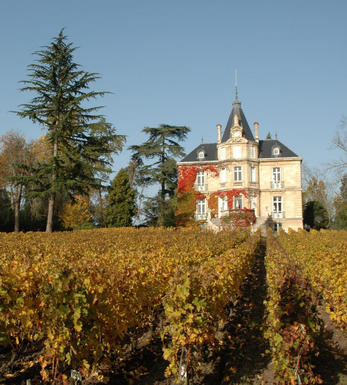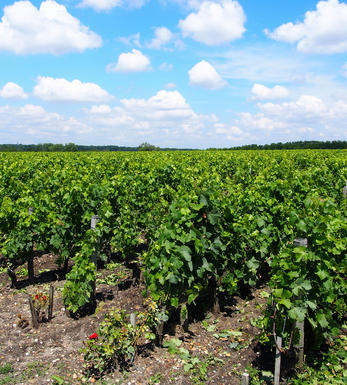
2019 Le C des Carmes Haut-Brion, Pessac-Léognan, Bordeaux

Critics reviews
Tension, energy and power with black fruits on the nose - get some Left Bank character straight away. This has juice running through the palate, an excellent 2nd wine because you get the sense of minerality, elegance and freshness of Pessac. More classic than its bigger sibling, perhaps, but with personality and punch. Vines in Martillac, in a separate plot from the main Carmes Haut-Brion estate. 30% new oak, only infusion technique used for maceration, 30% whole bunch fermentation. 3.59pH.
Drink 2022 - 2034
Jane Anson, janeanson.com (May 2020)
Beautiful fragrance to the nose, perfumed and delicate yet so expressive, nothing out of balance with cherries and violets bursting out of the glass. Gorgeous smooth mouthfeel with some milk chocolate dusting on the fruit, tannins are delicate and softly mouth filling with a lovely salinity to the palate - creamy and unctuous but at the same time there's lots of acidity. This has a verticality to it, layered but with an aerial quality too, the flavours just glide across the palate with lift on the finish - so satisfying and drinkable. Just a glorious, shining, bright, velvety, succulent glass of wine. Pure elegance. A blend of 55% Cabernet Sauvignon, 44% Merlot and 1% Petit Verdot, 3.55pH.
Drink 2022 - 2046
Georgina Hindle, Decanter (January 2022)
About this WINE

Château les Carmes Haut-Brion
Château les Carmes Haut-Brion is a 10.3-hectare wine estate in Pessac-Léognan on the Left Bank of Bordeaux. The property was established over 400 years ago. It takes its name from the Carmelites, the order of monks that tended it for almost 200 years. Once a little-known neighbour of the world-famous Châteaux Haut-Brion and La Mission Haut-Brion, things have changed rapidly here in recent years and it is today one of Bordeaux’s most exciting names. In 2010, the estate was acquired by Patrice Pichet, a French property developer. He quickly enlisted the dynamic Guillaume Pouthier as winemaker and director, and this has been a truly hot property ever since.
The wine here is stylistically unique within Bordeaux. This is in part due to the vineyard: the estate sits just outside the city of Bordeaux, with some limestone soils to complement the more typical gravel and clay. There is a high proportion of old-vine Cabernet Franc, rarely seen to any great extent on the Left Bank. The team has worked very hard to understand the specificities of each plot and sub-plot, enabling them to react to specific needs – but only where necessary.
Guillaume Pouthier is also a serial innovator. He is a proponent of whole-bunch fermentation, which is virtually unheard of in Bordeaux. Extraction, an important winemaking process, is handled differently here too: Guillaume uses a very gentle method of infusion rather than the more typical pumping-over or punching-down. The wines are matured in a combination of new French oak barrels, large oak casks and amphorae.

Pessac-Leognan
In 1986 a new communal district was created within Graves, in Bordeaux, based on the districts of Pessac and Léognan, the first of which lies within the suburbs of the city. Essentially this came about through pressure from Pessac-Léognan vignerons, who wished to disassociate themselves from growers with predominately sandy soils further south in Graves.
Pessac-Léognan has the best soils of the region, very similar to those of the Médoc, although the depth of gravel is more variable, and contains all the classed growths of the region. Some of its great names, including Ch. Haut-Brion, even sit serenely and resolutely in Bordeaux's southern urban sprawl.
The climate is milder than to the north of the city and the harvest can occur up to two weeks earlier. This gives the best wines a heady, rich and almost savoury character, laced with notes of tobacco, spice and leather. Further south, the soil is sandier with more clay, and the wines are lighter, fruity and suitable for earlier drinking.
Recommended Châteaux: Ch. Haut-Brion, Ch. la Mission Haut-Brion, Ch. Pape Clément, Ch Haut-Bailly, Domaine de Chevalier, Ch. Larrivet-Haut-Brion, Ch. Carmes Haut-Brion, Ch. La Garde, Villa Bel-Air.

Cabernet Sauvignon Blend
Cabernet Sauvignon lends itself particularly well in blends with Merlot. This is actually the archetypal Bordeaux blend, though in different proportions in the sub-regions and sometimes topped up with Cabernet Franc, Malbec, and Petit Verdot.
In the Médoc and Graves the percentage of Cabernet Sauvignon in the blend can range from 95% (Mouton-Rothschild) to as low as 40%. It is particularly suited to the dry, warm, free- draining, gravel-rich soils and is responsible for the redolent cassis characteristics as well as the depth of colour, tannic structure and pronounced acidity of Médoc wines. However 100% Cabernet Sauvignon wines can be slightly hollow-tasting in the middle palate and Merlot with its generous, fleshy fruit flavours acts as a perfect foil by filling in this cavity.
In St-Emilion and Pomerol, the blends are Merlot dominated as Cabernet Sauvignon can struggle to ripen there - when it is included, it adds structure and body to the wine. Sassicaia is the most famous Bordeaux blend in Italy and has spawned many imitations, whereby the blend is now firmly established in the New World and particularly in California and Australia.


Buying options
Add to wishlist
Description
Tension, energy and power with black fruits on the nose - get some Left Bank character straight away. This has juice running through the palate, an excellent 2nd wine because you get the sense of minerality, elegance and freshness of Pessac. More classic than its bigger sibling, perhaps, but with personality and punch. Vines in Martillac, in a separate plot from the main Carmes Haut-Brion estate. 30% new oak, only infusion technique used for maceration, 30% whole bunch fermentation. 3.59pH.
Drink 2022 - 2034
Jane Anson, janeanson.com (May 2020)
wine at a glance
Delivery and quality guarantee